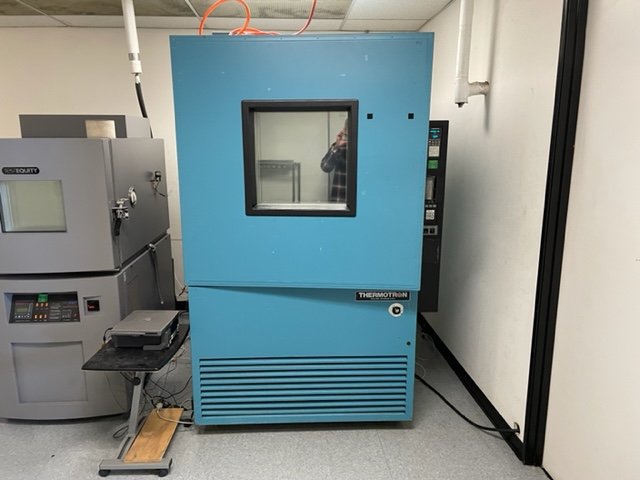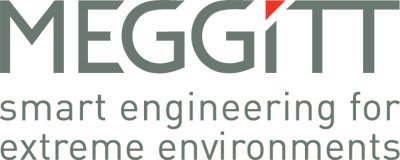CI Testing Lab Locations

CI Silicon Valley Testing Lab

CI Los Angeles Testing Lab - click to view lab equipment

CI North Carolina Testing Lab - click to view lab equipment
Temperature and Humidity Testing
CI Testing Labs provides humidity and temperature testing services. A wide range of humidity chambers, temperature chambers, and vibration testing equipment is available to provide customized testing solutions.
Thermal and humidity testing includes humidity cycling, high-temperature testing, and moisture-resistance testing. Each test is designed with unique thermal and humidity conditions to establish the temperature and moisture limits of products. Tests can be conducted with static or cycling temperature and humidity levels. Accurate testing will verify the causes of product defects and early life failure.
Temperature and humidity testing is safely monitored online using EDM Cloud. Reports and testing status is available for viewing at any time. Users can check the status of individual humidity and temperature chambers as the test progresses.
Temperature and Humidity Testing Procedures
CI Testing Labs engineers provides temperature and humidity testing assistance. Temperatures and humidity change rates are monitored along with changes to the test object. Testing results are shared in comprehensive reports. Lab engineers are available to work on eliminating part failures for finished products.
| Step 1 | Test objects are received at the testing lab. |
|---|---|
| Step 2 | Dedicated lab engineers provide support to set up testing. Tests can be set up according to military standards, ISO standards, etc. |
| Step 3 | Test object(s) are placed into temperature, humidity, or combined testing chamber. |
| Step 4 | Testing proceeds and data is recorded. Online monitoring is available. |
| Step 5 | Results and testing reports are provided. |
| Temperature & Humidity Test Specifications / Standards |
|---|
| MIL-STD-202 Method 103 |
| MIL-STD-202 Method 103B |
| MIL-STD-750 Method 1021 |
| JESD22-A101 |
| GR-468-CORE |
Temperature and Humidity Tests
CI testing labs provides thermal cycling, humidity testing, and thermal shock testing services. Comprehensive reporting and technical assistance from experienced engineers is provided.
Thermal Cycling
CI Testing Labs recommends performing a thermal step or exploratory characterization prior to thermal cycling.
In thermal cycling, specimens are placed in a thermal chamber and subjected to various temperatures to calculate thermal limits and verify internal heating and cooling abilities. Temperature cycling is often combined with humidity and sometimes vibration testing, particularly in transportation and defense products.
The expansions and contractions results in component fatigue, allowing easy identification of immediate design inconsistencies caused by poor layout, design, or manufacturing.
Thermal cycling is often used to calculate a product’s life expectancy. This test should be performed after the primary evolution to mitigate any possible issues. When latent failures are a possible concern, a less destructive stress method should be used to evoke failures before the product has reached a destructive failure mode. Once fatal failures have occurred, it can be cumbersome if not impossible to troubleshoot the failure’s root cause.
Failure modes:
Warping, cracking or breaking of component contact(s). Delamination of PCB or substrates.
Solder weakness, poor continuity of components not secured, or inherent failure
Identifiable: Intermittent anomalies ultimately leading to catastrophic failure
Combined temperature, humidity, vibration testing chamber
Thermal Shock Testing
Thermal shock is a type of thermal cycling performed in a thermal shock chamber, which is comprised of two pre-heated and pre-cooled containers. A mechanism transfers specimens between the hot and cold regions. Unlike traditional thermal cycling, wait time is not required to switch the products from extreme heat to cold. The temperature shock is immediate and can quickly determine product failings with rapid material expansions and contractions.
The expansions and contractions are stronger than thermal cycling, resulting in component fatigue at a faster rate. Immediate design inconsistencies caused by poor layout, design, or manufacturing are easily identifiable.
Thermal shock testing should be performed after the primary evolution to mitigate any possible issues. If latent failures are a possible concern, a less destructive stress method should be used to evoke failures before the product has reached a destructive failure mode. Fatal failures make it difficult if not impossible to troubleshoot the failure’s root cause.
Failure modes:
Warping, cracking or breaking of component contact(s). Delamination of PCB or substrates.
Solder weakness, poor continuity of components not secured, or inherent failure
Identifiable: Intermittent anomalies ultimately leading to catastrophic failure
Humidity Test Chamber
Temperature and Humidity Testing
Temperature and humidity testing is use to prove the susceptibility of a UUT to temp/RH fluctuations within or near the expected end user applications. This test can be used as a precursor or qualification (post test) of other reliability tests.
The MIL-STD-202 test provides an “icing” procedure which incorporates high RH, low RH and freezing which can accelerate delamination or associated precipitation of failures within substrates.
Failure Modes:
Ingress, oxidation, shorts, de-lamination or component anomaly
Identifiable: most often catastrophic











































